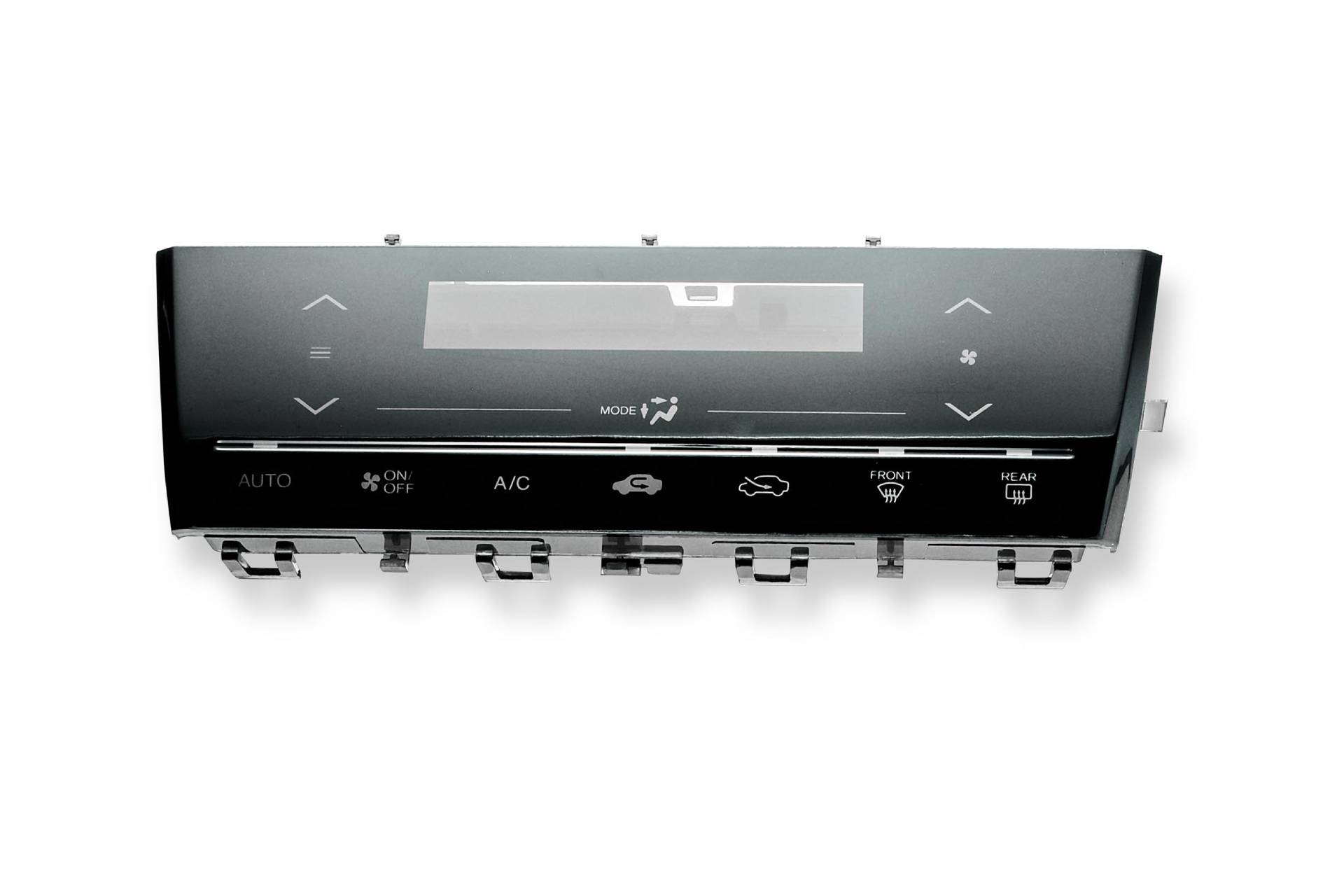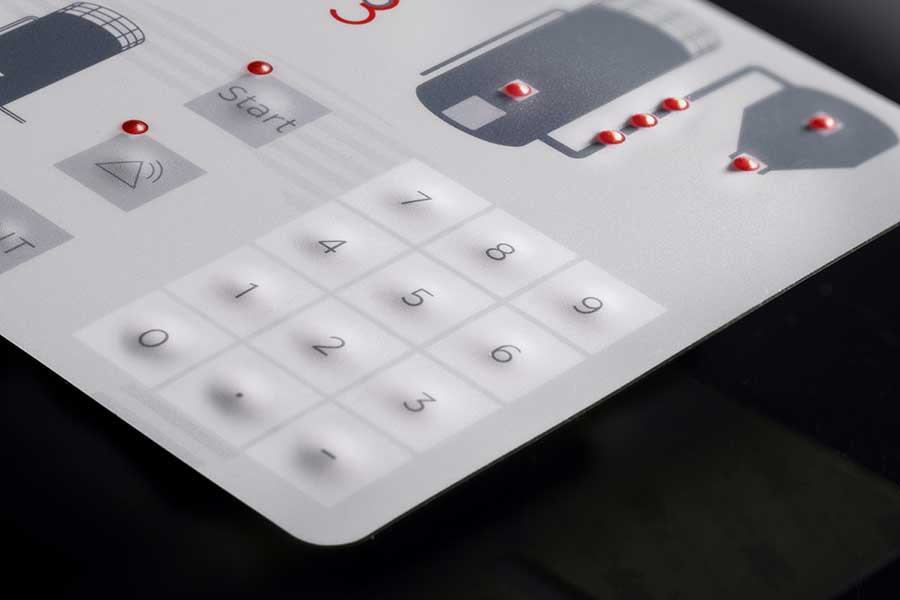All Concerning Membrane layer Switch Over: A Comprehensive Guide for Beginners
Membrane switches are vital components in modern-day electronic devices, providing an one-of-a-kind interface for individual communication - membrane switch. Their layered building, including overlays and conductive traces, offers performance and toughness. Unlike traditional mechanical buttons, membrane layer buttons present a sleek layout and adjustable choices. Understanding their key functions and advantages can change item design. The details of their application and design factors to consider warrant additional expedition.
What Is a Membrane layer Switch?
A membrane switch is a kind of electric switch that contains a versatile membrane layer layered over a printed circuit board. This design allows for a smooth and small user interface, typically utilized in numerous digital devices. Membrane switches are generally located in customer home appliances, medical devices, and industrial machinery as a result of their sturdiness and resistance to ecological factors.The construction commonly consists of several layers, such as visuals overlays and glue backing, which give tactile feedback and safeguard the wiring underneath. The procedure of a membrane layer switch is started when stress is related to the surface, completing an electric circuit.These switches are valued for their flexibility, allowing custom-made layouts and published graphics that accommodate specific interface. Their inconspicuous nature lowers room needs, making them ideal for applications where standard buttons might not fit. Overall, membrane switches use a visual and useful option for contemporary digital gadgets.
Key Components of Membrane Layer Switches Over
Membrane switches consist of numerous vital components that add to their capability and performance. The leading layer, called the overlay, offers the interface and is commonly printed with symbols or graphics. Below the overlay lies a spacer layer, which divides the conductive aspects and avoids inadvertent activation. The next essential element is the visuals layer, which improves appearances and assures the toughness of the design.Conductive traces, usually made from materials like silver or carbon, are published on the circuit layer. When pressure is put on the overlay, these traces enter contact, finishing the circuit. In addition, a backing layer supplies structural assistance and can be made from products such as polyester or polycarbonate. With each other, these parts create a reliable, straightforward interface suitable for different applications, from house home appliances to industrial tools. Understanding these components is important for any person curious about membrane switch modern technology.
How Membrane Switches Work
Recognizing how membrane switches over function is crucial for appreciating their extensive use in numerous devices. A membrane switch runs with a series of layers, including a visuals overlay, spacer, and a circuit layer. When stress is related to the overlay, it presses the spacer layer, allowing the circuit layer to make get in touch with and finish an electric circuit. This action sends out a signal to the device, triggering a feedback, such as switching on a light or activating a function.Membrane switches can be made with various functions, consisting of responsive feedback, backlighting, and customized graphics, enhancing customer communication. Their construction enables a closed layout, shielding the inner parts from dirt, moisture, and contaminants. This sturdiness makes them appropriate for varied applications, from consumer electronics to industrial equipment. In general, the simplicity and effectiveness of membrane layer changes contribute to their popularity in modern technology.
Benefits of Membrane Layer Switches Mechanical Buttons
While mechanical buttons have long been a staple in numerous devices, membrane layer changes offer distinct benefits that make them significantly appealing. One substantial benefit is their slim profile, enabling even more small styles and greater flexibility in item advancement. Additionally, membrane switches over function an uniform surface area, which boosts aesthetic appeal and streamlines cleansing, making them suitable for environments where health is critical.Another advantage is their resistance to dust and dampness. Unlike mechanical switches, which can be compromised by ecological elements, membrane buttons offer a sealed user interface that safeguards versus impurities - membrane switch. Membrane layer buttons normally have a longer lifespan due to less relocating parts, resulting in boosted resilience and reliability.Cost-effectiveness is additionally a noteworthy advantage, as membrane switches can be generated in bulk with reduced production expenses. These variables combine to place membrane switches as a sensible alternative to typical mechanical options in different applications
Common Applications of Membrane Switches Over
Membrane switches are extensively used in different fields, especially in customer electronic devices and industrial control board. In customer gadgets, they give a sleek, easy to use user interface, while in industrial settings, they improve durability and functionality. Comprehending these applications highlights the convenience and practicality of membrane switches in contemporary innovation.
Customer Electronic Devices Instruments
As customer electronic devices continue to evolve, membrane switches have ended up being a prominent selection for a range of tools due to their flexibility and smooth style. These switches are frequently discovered in mobile phones, tablets, and remotes, where room is restricted and aesthetics matter. Their reduced account and customizable layouts allow producers to create user-friendly interfaces that boost the total customer experience. Furthermore, membrane switches are frequently used in devices such as microwaves and coffee manufacturers, giving instinctive control choices while withstanding moisture and dust. The longevity and dependability of membrane switches make them ideal for daily consumer items, making sure durability and consistent performance. On the whole, their combination in consumer electronic devices shows a blend of capability and contemporary design.
Industrial Control Panels
The applications of membrane layer changes extend past consumer electronic devices, discovering considerable use in industrial control panels. These switches are preferred for their longevity and resistance to rough atmospheres, making them excellent for producing and procedure control settings. They provide a dependable user interface for operators to regulate machinery, display processes, and readjust settings. Membrane buttons can be personalized to match particular functional requirements, including features like backlighting and responsive responses, enhancing individual experience. Their inconspicuous design enables integration right into numerous equipment, while their capability to withstand spills, dust, and severe temperatures assurances long life. In general, membrane layer buttons contribute to safe and efficient operation in commercial applications, showing their flexibility and effectiveness sought after environments.
Considerations for Designing Membrane Layer Changes
When developing membrane layer switches, choosing the right materials is vital to guarantee resilience and performance. In addition, understanding layer configuration techniques can considerably impact the button's efficiency and customer experience. These factors to consider play an important role in creating trustworthy and reliable membrane layer button styles.
Material Choice Relevance
Material selection plays a vital function in the style and performance of membrane switches. The picked products straight impact the switch's resilience, tactile response, and total visual. Trick factors to consider why not check here include the substrate, which must provide architectural stability Check This Out while allowing for flexibility, and the graphic overlay, which needs to be immune to put on and environmental elements. Conductive materials need to assure trusted electric performance, while adhesives must supply solid bonding without jeopardizing the button's procedure. Furthermore, compatibility with manufacturing procedures and end-user atmospheres is important; products need to endure varying temperature levels, humidity degrees, and chemical exposure. Ultimately, ideal product choice not just improves the membrane button's performance but additionally contributes to its long life and individual complete satisfaction, making it a crucial facet of the style procedure.

Layer Arrangement Methods

Regularly Asked Questions
How Much Time Do Membrane Switches Over Usually Last?
Membrane layer switches normally have a life-span of 1 to 5 million cycles, relying on use and ecological problems. Aspects such as design top quality and operating frequency significantly affect their resilience and total efficiency longevity.

Can Membrane Layer Changes Be Personalized for Particular Designs?
Membrane layer buttons can undoubtedly be personalized to accommodate details layouts, permitting diverse forms, shades, and performances. This flexibility allows producers to tailor these buttons to meet one-of-a-kind visual and functional needs effectively.
What Products Are Utilized in Membrane Switch Construction?
Membrane layer buttons are generally constructed making use of materials such as polyester, polycarbonate, and glue layers. These materials give resistance, versatility, and durability to ecological factors, ensuring the switches operate effectively in various applications and conditions.
Are Membrane Switches Immune or water resistant to Wetness?
Membrane switches can be developed to be moisture-resistant, utilizing specialized products and coverings. Their water resistant capacities depend on building high quality and details applications, making it important to analyze requirements for optimal efficiency in various environments.
Just How Are Membrane Switches Fixed if Harmed?
Repairing damaged membrane changes usually involves replacing the impacted layer or circuit. her response Professionals may likewise use conductive adhesive or make use of specialized repair work packages, guaranteeing functionality is recovered without full substitute of the whole button assembly. Unlike traditional mechanical switches, membrane layer buttons present a smooth design and adjustable alternatives. A membrane button is a kind of electric button that consists of a flexible membrane layer layered over a published circuit board. The procedure of a membrane layer switch is initiated when pressure is used to the surface area, finishing an electrical circuit.These buttons are valued for their versatility, making it possible for personalized layouts and published graphics that cater to details individual interfaces. While mechanical switches have long been a staple in several gadgets, membrane switches over offer distinctive benefits that make them increasingly appealing. Membrane layer switches typically have a longer life-span due to less relocating parts, resulting in improved resilience and reliability.Cost-effectiveness is also a noteworthy benefit, as membrane layer switches can be created in bulk with reduced manufacturing costs.